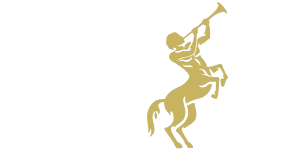-
"Survey return from William Watson"
Fetlar, Shetland.
1850.
RCP/COL/4/8/194
William Watson was a church minister in Fetlar.
Fetlar was a united parish with North Yell in Shetland. In 1861, the population was 1480. In particular, North Yell had many sheepwalks. There was some agriculture and livestock breeding. The main industry in the parish was fishing.
[[Addressee]]
The Rev
William Watson
Fetlar
Lerwick
[[Survey]]
QUERIES
1. How many Medical Men practice within the Parishes1 of Fetlar and North Yell?
Three – all residing in Unst, the neighbouring Island to the North –
2. The Names and Addresses of these.
Laurence Edmondstone M. D. Balta Sound, Unst
Basil Spence M. D. Shore Unst
James Smith M. D. Clivocast,2 Unst –
The first 12 miles – 6 land & 6 sea dist from Fetlar
The other two 6 miles by sea from Fetlar3
3. Has the number increased or diminished of late years?
Continued the same for a number of years past
4. Have any left the Parish since you became connected with it? If so, for what reasons?
It is 20½ years since I was settled Minr of Fetlar & North Yell. Some time after my coming Dr Smith lived in his fathers house in Fetlar, practising but left – as not having sufficient practice in the Island
5. Is there any complaint among the people of inadequacy in the supply of Medical aid?
Great complaints from the difficulty & expense of procuring aid when needed
6. Do you know of any cases of protracted suffering, or of injury by Accident, such as might have been alleviated had proper advice been at hand?
Many – both in this Island & North Yell
7. To what extent is the deficiency of qualified Practitioners made up by the efforts of other parties?
Sir Arthur Nicolson & Lady when in Fetlar give medicine to the poor people. The Minister is almost daily applied to, - & in N Yell, several individuals give medicine – In both parishes one or two persons can let blood4 –
8. Does your experience enable you to suggest any measure – of general applicability – such as would be likely to relieve to some extent the evils (if they exist) of deficiency in the supply of Medical aid?
None unless the settlement of more medical men among us; and that our poverty cannot pay for
9. What Heritors5 are resident, either generally or occasionally, in your Parish?
In Fetlar, Sir Arthur Nicolson occasionally
Mr Gilbert Smith, Mr Jerom Johnson
& Mrs Cath Nicolson permanently
In North Yell, Mr Wm Pole, Mr Thomas Irvine
Mr Wm Craigie & a number of small Udallers6 –
[[Additional Text]]
I am not in reach of any Medical Man, to whom I could make known the contents of your communication
Wm Watson Minr of Fetlar & NYell
Roy. Col. Physicians – Novr 1850 recd 2d Decr7
Explanatory notes:
1. The respondent has inserted “es” here to denote reference to the two parishes.
2. The “t” at the end of “Clivocast” is very faint but can still be seen.
3. “from Fetlar” represented by ditto (i.e. “) abbreviation.
4. Bleeding, or bloodletting, is the withdrawal of blood from a patient to prevent or cure illness and disease. This was a common medical practice in the 1800s, dating back to antiquity, and was often carried out by unlicensed healers as well as qualified physicians.
5. A heritor was a landowner, under Scots Law, whose holdings were sizeable enough for them to be liable for the payment of public burdens such as Poor Law rates, road and bridge assessments and the church minister’s stipend.
6. An udallar is someone who held land by allodial rights, i.e. absolutely, without any feudal obligations or any mortgage or tax obligations.
7. This text appears on the addressee page.
